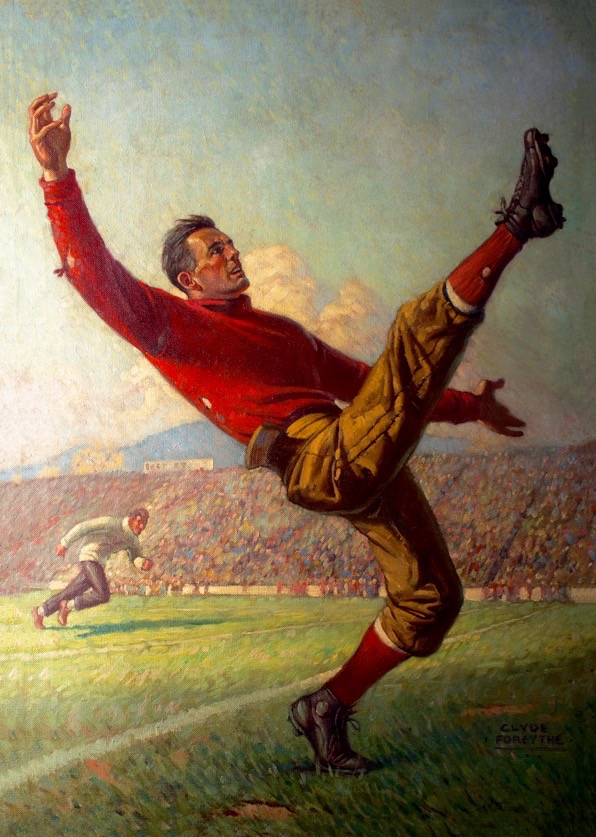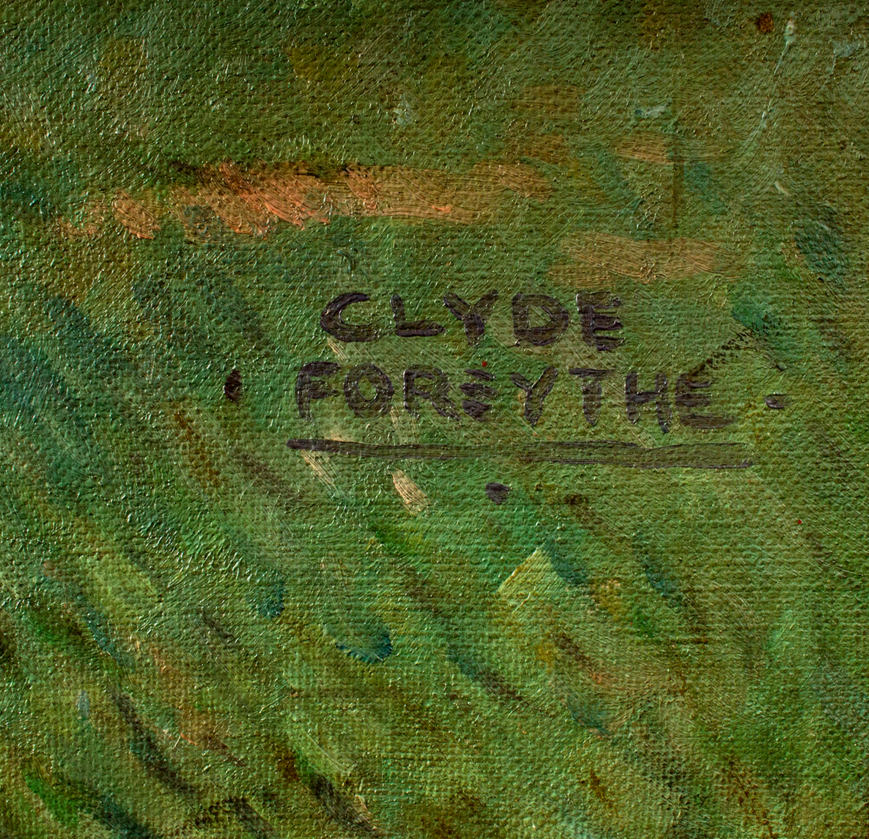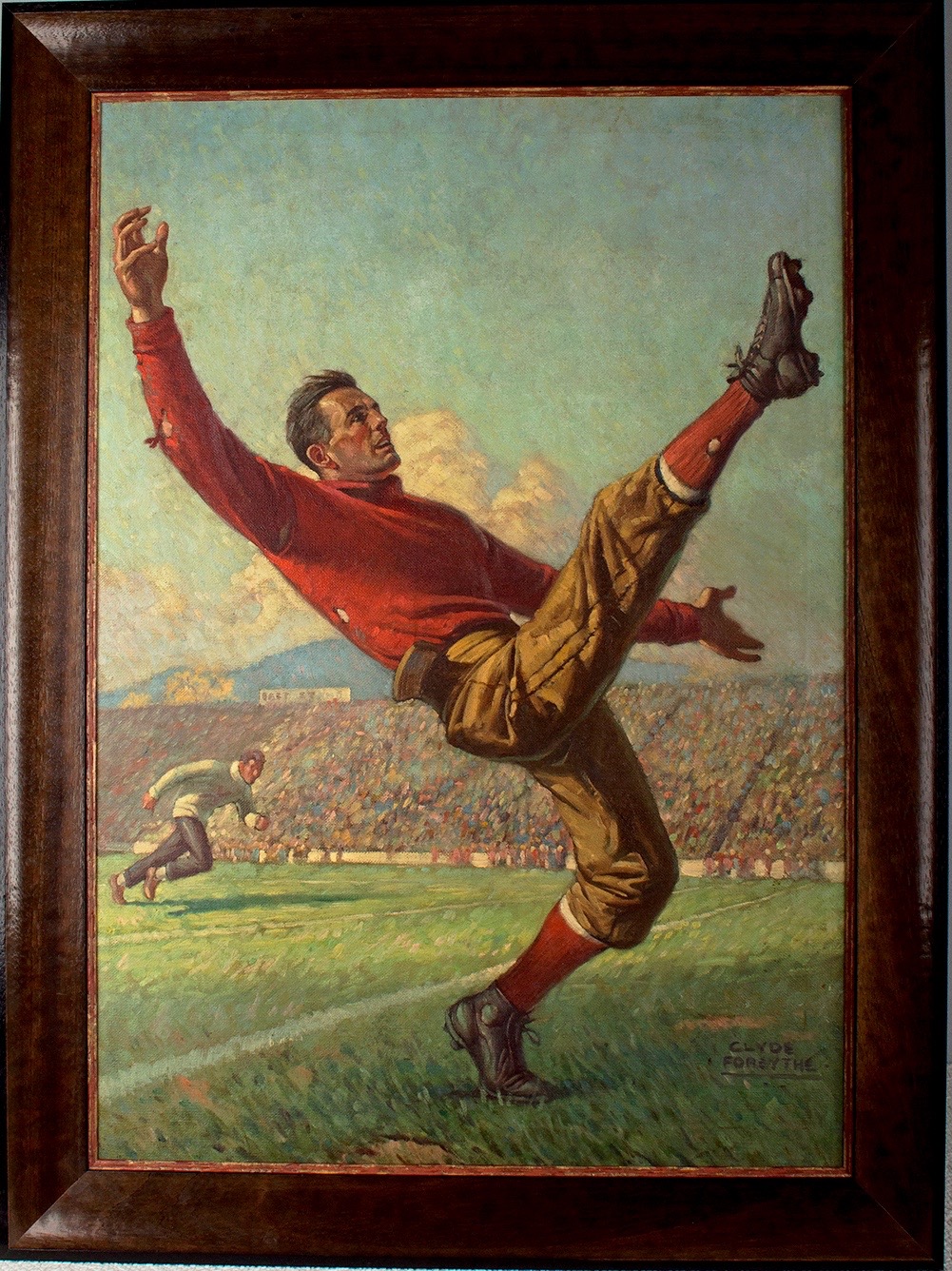"It's Good!" Lot no. 3086
By Clyde Forsythe (1885 - 1962)
1920's (Estimated)
24.00" x 34.00"
Oil On Stretched Canvas
Signed Lower Right
REQUEST PRICE
PURCHASE REQUEST
likely a cover for Top Notch
Explore related art collections: Men / Magazine Covers / 1920s / Sports / $5,000 - $20,000 / Football
See all original artwork by Clyde Forsythe
ABOUT THE ARTIST
Clyde (Vic) Forsythe entered the comic strip world prior to World War I. His most successful feature was the long-running Joe Jinks, which dealt successively with automobiles, aviation, and boxing. He drew a number of other strips, and for a time, shared a studio with Norman Rockwell.
Victor Clyde Forsythe was born in Southern California in 1885. Writing, drawing, and sports were among his early interests, and he combined all three when he got a job doing sports cartooning and reporting for a local paper. In the second decade of the century, he headed for New York City to work for The World.
Joe's Car started in 1918. It was a daily humor strip dealing with Joe Jinks, his domestic life and his obsession with the increasingly popular automobile. Joe was a typical cartoon every man vain, petty, argumentative, sentimental, and possessed the required prominent nose and wispy mustache. In the 1920s, Joe took up flying, and then met a boxing champ by the name of Dynamite Dunn and became his manager. In 1928, a Sunday page was added and the feature's name was changed to Joe Jinks. In the daily, Forsythe concentrated on the gritty world of professional boxing while the Sunday page was a day of rest, covering Joe's home life and his problems.
In 1933, Forsythe left Joe Jinks, where United Features syndicated it. The following year, he signed with King Features and initially began a cowboy strip called Way Out West. He then switched to a domestic feature, The Little Woman, while keeping his Western alive as a Sunday topper. Neither of these efforts was successful. He returned to Joe Jinks, drawing it daily on Sunday from May 1937 into 1938. He soon quit comics for good, suffering a nervous breakdown.
Forsythe returned to Southern California, settling in San Marino. He devoted most of his remaining time to painting. Years earlier, while living in New Rochelle, New York, he had met Norman Rockwell. The younger, still struggling Rockwell became a close friend and turned to him frequently for advice. He mentions the cartoonist in his autobiographical writings, saying, "Vic was about the only person I knew who would give me any real criticism." For a time, the two shared a studio that had once belonged to Western painter Frederic Remington.
Askart





